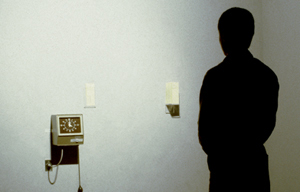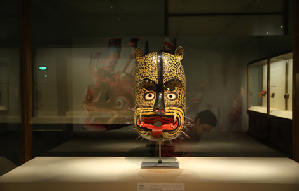German neo-expressionism debuts in China
Updated: 2013-07-12 15:00
By Sun Yuanqing (China Daily)
|
|||||||||||
More than 30 years after Chinese modern artists were exposed to German neo-expressionism paintings, they are finally making their debut in the country.
"Chinese art circles have been expecting this exhibition for more than 30 years. This exhibition is unprecedented in terms of quality and quantity," says Huang Mei, co-curator of the exhibition.
The exhibition Exhaustion presents 33 pieces of representative German neo-expressionist paintings, along with works by Chinese emerging artists who have been influenced by German neo-expressionism.

"This is a dialogue between German and Chinese artists, as well as between two-dimensional and three-dimensional art," Huang says.
A reaction against minimalist modern art in the 1970s, neo-expressionism is known for its vitalization of painting through strong colors and individual expression.
Although it has been a major influence on Chinese modern art since the 1980s, no proper exhibition has been hosted in China before.
Sourced from eight European countries on insurance of over 200 million yuan ($33 million), the exhibition highlights pioneer neo-expressionists including Georg Baselitz, Anselm Kiefer and Joerg Immendorff.
Although the exhibition proves a bit challenging to local audiences, who say some of the works are beyond their comprehension, it provides them a chance to learn, says Wang Huang-sheng, co-curator of the exhibition and director of CAFA Art Museum.
"We are usually confined by what we are used to seeing. That is why we should always introduce new art as it provides a new perspective," Wang says.
Among the Chinese artists is Zhang Fangbai, who combines German neo-expressionism and Chinese ink-painting skills in his depiction of eagles.
Fu Zhongwang's installation Collect, Wash and Dry drew the most attention. The work features washing machines, clothes hanging out of balconies and hand-wash devices to demonstrate people's collective memory of hand-washing and natural drying.
"This is a collective work that encourages interaction, not just observation," Fu says.
|
|
|
| Masks reveal unknown worlds |
Related Stories
Culture relics find home 2013-07-10 11:21
Subway stations stop human traffic with art pieces 2013-07-10 10:29
Getting into the picture 2013-07-09 16:17
Eye-catching bodypainting 2013-07-09 09:47
Getting into the picture 2013-07-09 16:17
Today's Top News
Top GSK executives probed in bribery
Coal mine found concealing blast death toll
A dream home helps build the future
Masks reveal unknown worlds
Shelter to help abandoned children
Lifesaving top priority, premier says
Pathfinder pianist
Villagers excited to meet President Xi
Hot Topics
Lunar probe , China growth forecasts, Emission rules get tougher, China seen through 'colored lens', International board,
Editor's Picks

|

|

|

|

|

|







